 |
| February 20, 2024 | Volume 20 Issue 07 |
Mechanical News & Products
Designfax weekly eMagazine
Archives
Partners
Manufacturing Center
Product Spotlight
Modern Applications News
Metalworking Ideas For
Today's Job Shops
Tooling and Production
Strategies for large
metalworking plants
Flex Locators for quick fixture changeover
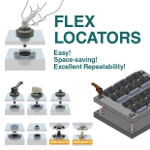 Flex Locators from Fixtureworks are designed for quick changeover of small and large fixtures, automation components, and more. They are ideal for applications that require frequent disassembly, providing excellent repeatability for locating and clamping in a single operation. Manual and pneumatic versions are available. Just turn the handle, knob, or screw!
Flex Locators from Fixtureworks are designed for quick changeover of small and large fixtures, automation components, and more. They are ideal for applications that require frequent disassembly, providing excellent repeatability for locating and clamping in a single operation. Manual and pneumatic versions are available. Just turn the handle, knob, or screw!
View the video.
Copper foam -- so many advantages
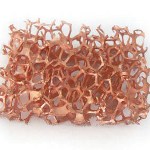 Copper foam from Goodfellow combines the outstanding thermal conductivity of copper with the structural benefits of a metal foam. These features are of particular interest to design engineers working in the fields of medical products and devices, defense systems and manned flight, power generation, and the manufacture of semiconductor devices. This product has a true skeletal structure with no voids, inclusions, or entrapments. A perennial favorite of Designfax readers.
Copper foam from Goodfellow combines the outstanding thermal conductivity of copper with the structural benefits of a metal foam. These features are of particular interest to design engineers working in the fields of medical products and devices, defense systems and manned flight, power generation, and the manufacture of semiconductor devices. This product has a true skeletal structure with no voids, inclusions, or entrapments. A perennial favorite of Designfax readers.
Learn more.
New torque inserts provide design flexibility
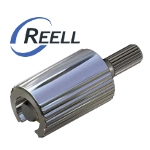 Reell's TI-330 torque insert completes the gap in torque range between the TI-320 and TI-340 models in the TI-300 series, providing enhanced design flexibility for a wider range of applications. With torque options ranging from 1.0 to 2.5 Nm, the TI-330 features a powdered metal package configuration designed to be press-fit into round holes for quick and easy installation. Mounting profile options include exposed knurled shaft end and a knurled zinc adapter for installation into plastics.
Reell's TI-330 torque insert completes the gap in torque range between the TI-320 and TI-340 models in the TI-300 series, providing enhanced design flexibility for a wider range of applications. With torque options ranging from 1.0 to 2.5 Nm, the TI-330 features a powdered metal package configuration designed to be press-fit into round holes for quick and easy installation. Mounting profile options include exposed knurled shaft end and a knurled zinc adapter for installation into plastics.
Learn more.
Superior fastening solution for securing rotating components to a shaft
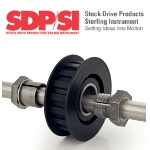 SDP/SI Shaftloc® fasteners offer distinct advantages over other fastening methods when securing rotating components to a shaft. The key to this compact, efficient design is its asymmetric thread geometry that produces a greater clamping force -- outperforming other fastening methods. Shaftloc is a patented fastening system manufactured by SDP/SI.
SDP/SI Shaftloc® fasteners offer distinct advantages over other fastening methods when securing rotating components to a shaft. The key to this compact, efficient design is its asymmetric thread geometry that produces a greater clamping force -- outperforming other fastening methods. Shaftloc is a patented fastening system manufactured by SDP/SI.
Learn more.
Great design: Handle with integrated lighting/signaling
 Signaling and indicator lights, switches, and buttons -- elements that hardly any machine can do without. The new JW Winco cabinet U-handle EN 6284 integrates all these functions into a single, compact element. The new U-handle is designed to enhance the operation of systems and machines. It features an integrated button and a large, colored, backlit area on the back of the handle. These elements can be used individually or in combination, providing a versatile tool for system control and process monitoring that can be seen from across the room.
Signaling and indicator lights, switches, and buttons -- elements that hardly any machine can do without. The new JW Winco cabinet U-handle EN 6284 integrates all these functions into a single, compact element. The new U-handle is designed to enhance the operation of systems and machines. It features an integrated button and a large, colored, backlit area on the back of the handle. These elements can be used individually or in combination, providing a versatile tool for system control and process monitoring that can be seen from across the room.
Learn more.
SOLIDWORKS: FeatureManager tips for assemblies
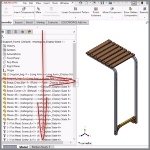 Discover tools to make your SOLIDWORKS assembly Feature-Manager design tree display easier to view and use. Learn options to limit the amount of information in each component listing, combine multiple instances of a component into a single listing, and separate fasteners mates into a new folder. Lots more tips on the SOLIDWORKS YouTube channel.
Discover tools to make your SOLIDWORKS assembly Feature-Manager design tree display easier to view and use. Learn options to limit the amount of information in each component listing, combine multiple instances of a component into a single listing, and separate fasteners mates into a new folder. Lots more tips on the SOLIDWORKS YouTube channel.
View the video.
Top die casting design tips: Xometry
 Optimize your die casting project's manufac-turability with these 23 top design tips from Xometry. Ensure your work is cost effective too, so you can hit the ground running and have the highest chance of success. Tips include: fillets and radii, wall thicknesses, ribs and metal savers, holes and windows, parting lines, finishes, and more.
Optimize your die casting project's manufac-turability with these 23 top design tips from Xometry. Ensure your work is cost effective too, so you can hit the ground running and have the highest chance of success. Tips include: fillets and radii, wall thicknesses, ribs and metal savers, holes and windows, parting lines, finishes, and more.
Read the Xometry article.
8 top ways to wreck your coupling-driven system
 Engineers at Ruland Manufacturing Co. have compiled the eight best ways to consistently sabotage or damage your coupling-driven system -- and how to avoid these pitfalls in the future. Misunderstanding performance criteria such as misalignment, torque, or rpm can be all it takes to cause a critical and costly failure.
Engineers at Ruland Manufacturing Co. have compiled the eight best ways to consistently sabotage or damage your coupling-driven system -- and how to avoid these pitfalls in the future. Misunderstanding performance criteria such as misalignment, torque, or rpm can be all it takes to cause a critical and costly failure.
Read the full article.
New washer tech for leak-free automotive sealing
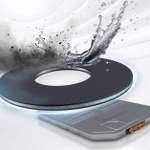 Trelleborg Sealing Solutions has just launched the Rubore® Washer, a unique solution offering virtually leak-free sealing beneath screwheads to safeguard critical systems in vehicles, especially electric ones.
Trelleborg Sealing Solutions has just launched the Rubore® Washer, a unique solution offering virtually leak-free sealing beneath screwheads to safeguard critical systems in vehicles, especially electric ones.
Read the full article.
How Reell electric wrap spring clutches work
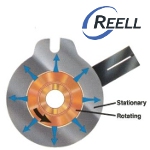 Electric wrap spring clutches are ideally suited for critical timing applications requiring consistent, repeatable engagement and disengagement performance. Wrap spring technology used in Reell clutches provides the capability to transmit a large amount of torque in a small size -- package sizes smaller than other clutch technologies such as friction disk, tooth, or magnetic particle. Reell's technology has very positive engagement characteristics and also limits the effects of wear.
Electric wrap spring clutches are ideally suited for critical timing applications requiring consistent, repeatable engagement and disengagement performance. Wrap spring technology used in Reell clutches provides the capability to transmit a large amount of torque in a small size -- package sizes smaller than other clutch technologies such as friction disk, tooth, or magnetic particle. Reell's technology has very positive engagement characteristics and also limits the effects of wear.
Read this informative Reell article.
New 'breathable' rupture disk tech provides overpressure and vacuum relief
 To increase equipment safety and reliability, a new rupture disk technology activates at a set burst pressure, but it can also "breathe" to relieve minor pressure fluctuations. The patent-pending, dual-function device from BS&B Safety Systems is ideal for use on low-pressure vessels that are susceptible to ambient temperature changes.
To increase equipment safety and reliability, a new rupture disk technology activates at a set burst pressure, but it can also "breathe" to relieve minor pressure fluctuations. The patent-pending, dual-function device from BS&B Safety Systems is ideal for use on low-pressure vessels that are susceptible to ambient temperature changes.
Read the full article.
Engineer's Toolbox: 9 considerations for specifying a slewing ring bearing
 In applications that require a bearing to support a structure while it rotates (e.g., cranes, radar, tank turrets), premature bearing failure can put people and equipment at risk. While slewing ring bearings have proven themselves countless times in such applications, designers must consider many factors when specifying them. According to engineers at Kaydon, the bearing's support structure, mounting (including bolt strength, tensioning, and hole patterns), installation, and even storage are all factors in a bearing's success or failure.
In applications that require a bearing to support a structure while it rotates (e.g., cranes, radar, tank turrets), premature bearing failure can put people and equipment at risk. While slewing ring bearings have proven themselves countless times in such applications, designers must consider many factors when specifying them. According to engineers at Kaydon, the bearing's support structure, mounting (including bolt strength, tensioning, and hole patterns), installation, and even storage are all factors in a bearing's success or failure.
Read the full article.
ClampDisk micro fastener is new alternative for automotive and consumer electronics
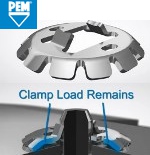 Designed as a unique alternative in assemblies for the automotive and consumer electronics markets, the ClampDisk Press-on Fastener is a new offering from PennEngineering that delivers a fast, simple way to achieve sheet-to-sheet clamped fastening while replacing the use of standard screws, nuts, and adhesives. The most common challenges that can be eliminated or reduced by using ClampDisk include over installation, cross threading, stripped screw heads, broken screws, and damaged product. This fastener can be removed easily with a sharp-edged tool.
Designed as a unique alternative in assemblies for the automotive and consumer electronics markets, the ClampDisk Press-on Fastener is a new offering from PennEngineering that delivers a fast, simple way to achieve sheet-to-sheet clamped fastening while replacing the use of standard screws, nuts, and adhesives. The most common challenges that can be eliminated or reduced by using ClampDisk include over installation, cross threading, stripped screw heads, broken screws, and damaged product. This fastener can be removed easily with a sharp-edged tool.
Learn more and see how ClampDisk works.
New nylon constant torque hinge
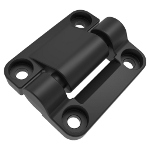 Southco has expanded its line of E6 Constant Torque Hinges with a compact, nylon version designed for small applications. The newest addition to the company's E6 50 Constant Torque Position Control Hinge series measures 45 mm with a torque range of 4 to 16 in./lb and is 65% lighter compared to the standard E6 50 Hinge. It provides constant resistance throughout the entire range of motion, enabling users to easily position doors, display screens, and other mounted components and hold them securely at any desired angle.
Southco has expanded its line of E6 Constant Torque Hinges with a compact, nylon version designed for small applications. The newest addition to the company's E6 50 Constant Torque Position Control Hinge series measures 45 mm with a torque range of 4 to 16 in./lb and is 65% lighter compared to the standard E6 50 Hinge. It provides constant resistance throughout the entire range of motion, enabling users to easily position doors, display screens, and other mounted components and hold them securely at any desired angle.
Learn more.
What injection molding material do I use?
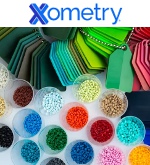 How do you decide what type of plastic to use for your next injection molding project? Xometry can help you narrow your choices. Discover the different strengths and applications for materials that could be ideal for your application by learning about the most common plastic injection molding materials in detail.
How do you decide what type of plastic to use for your next injection molding project? Xometry can help you narrow your choices. Discover the different strengths and applications for materials that could be ideal for your application by learning about the most common plastic injection molding materials in detail.
Read this detailed Xometry article.
Benefits of heat pumps detailed in new NREL report
Millions of U.S. households would benefit from heat pumps, but the cost of installing the technology needs to come down to make their use a more attractive proposition, according to researchers at the U.S. Department of Energy's National Renewable Energy Laboratory (NREL).
The findings, detailed in the journal Joule, quantify the costs and benefits of air-source heat pumps across the United States and consider various climates, heating sources, and types of homes. The researchers based their conclusions on simulations of 550,000 statistically representative households. Their analysis considered such factors as the performance of different heat pumps and whether additional steps to upgrade home insulation had occurred.
The analysis revealed a majority of Americans (62% to 95% of households, depending upon heat pump efficiency) would see a drop in their energy bills by using a heat pump. Improving the weatherization of a home, such as by installing better insulation, would increase the range to 82% to 97%. However, due to high installation costs, heat pumps may only be financially feasible for a smaller portion of households.
"There are millions of people who would benefit from putting in heat pumps, and there are incentives made available through the Inflation Reduction Act, both tax credits and rebates, that millions of households can benefit from," said Eric Wilson, a senior research engineer in the Buildings Technologies and Science Center at NREL and lead author of the paper, "Heat pumps for all? Distributions of costs and benefits of residential air-source heat pumps in the United States." "But what this paper shows is that there are still millions more households for whom the technology is still pretty expensive, and we need work to bring down the cost of installing heat pumps."
His co-authors are Prateek Munankarmi, Janet Reyna, and Stacey Rothgeb, all from NREL; and Brennan Less from Lawrence Berkeley National Laboratory.
Because heat pumps provide both heating and air conditioning, homeowners who do not already have air conditioning benefit from additional comfort, but that comes with an additional cost. The researchers also noted installers who lack experience with heat pumps may also charge higher prices "to cover the hassle and risk of working with unfamiliar equipment and sizing procedures."
Nationally, the researchers calculated, heat pumps would cut home site energy use by 31% to 47% on average, depending on its efficiency level, and 41% to 52% when combined with building upgrades such as better insulation. The big difference between energy savings and energy cost savings is because natural gas prices are much lower than electricity prices on a Btu basis in many parts of the country.
The housing characteristics that had the largest bearing on savings were the heating fuel type and the presence of air conditioning. For the 49 million homes that use electricity, fuel oil, or propane for heat and have air conditioning, 92% to 100% of homes would see energy bill savings, with median savings of $300 to $650 a year depending on heat pump efficiency.
Co-author Munankarmi said the savings were most significant in colder climates. Additionally, he said, homeowners can "save thousands of dollars on average" by putting in a smaller heat pump if they first have taken steps to improve the energy efficiency of their dwellings.
The researchers also found that installation of a heat pump prompted greenhouse gas emissions to decline in every state, but the drop was especially large when it replaced a heating system that had been powered by fossil fuels. Nationally, heat pumps would cut residential sector greenhouse gas emissions by 36% to 64%, including the emissions from new electricity generation.
The Department of Energy's Building Technologies Office funded the research.
Source: NREL
NREL is the U.S. Department of Energy's primary national laboratory for renewable energy and energy efficiency research and development. NREL is operated for DOE by the Alliance for Sustainable Energy LLC.
Published February 2024
Rate this article
View our terms of use and privacy policy

